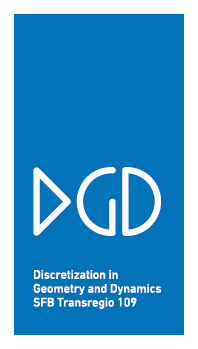While there is a large literature selection (in biophysics, biochemistry, molecular biology) on all-atom ab-initio molecular dynamics simulations of protein behaviour, larger-scale processes of interest such as, say, virus shell self-assembly from its coat proteins lie beyond reach of this approach; a coarse-grained description of the proteins is needed. In this project we will explore the question whether such assembly processes can be explained via a recently introduced geometry-based model for the solvation free energy Fsol of the protein which expresses the latter as a linear combination of the Hadwiger invariants (or mixed volumes) of its shape.
This model, introduced in the physics literature, casts the general intuition that solvation of proteins is driven by geometric shape into the precise mathematical form
$F_\text{sol} = p V + s A + k C + \tilde{k} X$
where the lowercase letters are system-dependent physical parameters and the up- percase letters stand for enclosed volume, area, mean width, and Euler characteristic. By Hadwiger’s theorem, every frame-indifferent, additive, Hausdorff-continuous function on the set of convex sets of $R^3$ is of this form. Here the shape is taken to be given by the solvent-accessible surface (SAS) of the protein. In the physics literature this model has been used to reconstruct the phase diagram of a single helical protein, demonstrat- ing the alpha-helix to beta-sheet transition. This definition of the solvation free energy was also used to examine the swelling behaviour of mammalian skin cells on water exposure driven by the complicated internal geometry of the protein matrix. We remark that this mesoscopic model is very similar to the geometric reformulation of the Heitmann-Radin bond-counting energy recently found in B08 which has the form $E_\text{HR} = p \leq \text{number of particles} + s \leq A + s \leq \mu + \tilde{k} \leq X$, where $\mu$ is a defect measure. This points to a close connection between – at first sight purely empirical – geometry-based mesoscopic protein modelling as pursued here and more traditional atomistic (molecular dynamics based) modelling.
Essentially, this model reduces the solvation properties of a collection of proteins and their partial or complete assemblies to a problem of differential geometry, and in the case of computation and simulation, this becomes a process of discrete differential geometry.



